Things can grow on you over time... or they can grate on your nerves...

The Boxer
Posted June 27th, 2015 (updated 7/5/2015)
Note: added some abandoned site images to the review at the bottom of the page. If you're not into the pastoral subject matter so much, they might suit you more. I've also added some notes on my experience with X-T1 firmware update 4.00.
"The first duty of love is to listen." – Paul Tillich
It would seem that Fujifilm loves us. More than any other camera company, they refine their cameras based on feedback from photographers – and you are left wondering why everyone doesn't do things like they do.
All the photos in this article were shot with the Fujifilm X-T1 and the Fujinon XF 18-135mm f/3.5-5.6 R LM OIS WR lens. Most all of the shots (but maybe for one) are from JPG, and only a couple of the "urbex" ones are HDR and they are all from JPG as well. However neither are they straight-out-of-camera (SOOC). They are also not composited or pieced together from several images.
Cutting and pasting images together is not how I work but it's a choice not a virtue. This applies also to whether one shoots RAW or not, and how one edits. Only the final image really matters because that's what people see.
That's how I see it and I personally am sick and tired about arguments over the virtue of "process". Only results matter. Period. Choose your process and be happy with it or not, but don't bother me with any thoughts of "it's not a real photo unless". For photojournalism I can see that to a certain degree, but not for art images.
You can skip down to the review, but I want to say a few things about using Fujifilm cameras for the past couple of years now.
2 Years a Fujifilm User
At this point, I have stuck with the Fuji's for 2 years and have no “itch” to move to another system. I've come to trust these cameras and lenses to deliver. I have a previous post reviewing the Fuji system from a year or so back and it's here: Solving for X: The Algebra of the Fujifilm X-System
So after 2 years what do I have? Very little overall. I have decided to go “lean”. I will have the following:
- Single X-T1 camera body
- X-100s camera
- Fujinon 18-135mm f/3.5-5.6 lens
- Fujinon 10-24mm f/4 lens (my “go to” lens for my art)
- Fujinon 56mm f/1.2 (a "wow" lens)
- Metabones Speed Booster Ultra – Nikon F to Fujifilm X-Mount
- 2 Fujifilm EF-42 flashes
- Several small manual flashes
- Wireless remotes and flash triggers
- Various old Nikon manual focus primes
This kit can do everything I really NEED to do. And it's less to carry around or obsess over. Generally it's pretty clear which lens I need and why. If I really need another body or special lens for something I'm doing I can rent them. The entire kit – everything – fits in a medum size photo backpack.

Go West Young Man!
No kidding, I've owned nearly every X-System camera at one time or another. I have over time had the following in my stable of cameras and lenses:
- X100 (sold, then got a second one and sold it)
- X100s (sold, then got a second one and held on to it)
- X-E1 (sold)
- X-M1 (sold)
- X-E2 (a pair of them, now for sale)
- X-T1 (not letting this one go)
- 14mm f/2.8 (sold)
- 18mm f/2 (sold)
- 23mm f/1.4 (sold)
- 35mm f/1.4 (sold)
- 18-55mm f/2.8-4 (sold, repurchased, sold)
- 55-200mm f/3.5-4.8 (sold)
- Zeiss Touit 12mm f/2.8 (sold)
And the odd thing is: none of those cameras was terrible. It's just that each one got a little closer to the mix of things a DSLR provided. I'm a confirmed mirrorless user for size and weight reasons – and I like the APS-C Fuji's better than the Micro Four Thirds I once owned (though they too were very good). But up until the X-T1 it seems that there was always something missing, or something I didn't want was there getting in the way.
The X-T1 has been out a year and I really had an attitude when it came out. I still really don't see why a mirrorless camera has to look like a DSLR! It's phony, it's marketing, and I'm not a fan. But finally the X-T1's handling features, AF performance, and weather sealing overcame my strong opinion. No, it's not an ugly camera – quite the contrary! It's more of a silly “principle” I'm holding onto. Somehow it's just “wrong” – but only to me I suppose.
I accepted the Olympus OMD E-M5 when I had it, and the Panasonic G5, GH2, GH1, etc. that I owned at one time or another – but I've just never been a fan of the DSLR form factor. I like the rangefinder form factor the most – but not enough to forego the serious advantages of the X-T1 design.

Finding Food in the Forest
The Fujifilm X-T1 Review
Okay, lets get down to it. First of all, there are a TON of reviews already out there, so I'm going to mainly just contrast and compare the X-T1 to other cameras I've shot and say what I like and don't like. Ditto the 18-135mm lens. The photos speak for themselves. You can click through them all to see larger versions on my flickr pages.
This review is for the camera with the 3.10 firmware and 4.00 firmware. The botanical garden images were shot on the 3.10, and the urbex images on the 4.00 but I don't see image quality differences. It mainly revolves around camera handling.
Let me say this though: this is a Fujifilm camera through and through. If you have ever liked shooting a Fujifilm camera, this one will likely thrill you if you spend any time with it. Both very familiar and much more capable all at the same time.
IMPORTANT: With the exception of the X-A1 and X-M1, the X-mount cameras are mainly for more advanced photographers or those aspiring to be one. They demand you make decisions at some level and are not generally a camera where you can just set everything to auto and go – or you'll probably be disappointed with the results. For those who are true "image makers" and not just "grabbing shots" this is a wonderful thing.
However if you don't fully understand photography, the "exposure triangle" and so forth, these cameras could cause you consternation – fair warning. For many of us they are a revelation, for others a curse. If you are a "point and shoot" type person and have no interest in controlling your capture yourself you might want to pass on cameras like this.
The image below was from JPG and the sky was so into being overblown that in recoving the highlights it began to break down. Look at the sky in the upper right and you'll see some bands. This is an extreme case and normally I'd use a raw image to capture this much dynamic range -- which is much wider than you might think looking at the finished image.

Baby Shrike's Tree
Things Fuji has Gotten Right on the X-T1
This list is things that are improved or finally right as compared with all their other cameras.
- All dials are either stiff enough or lock down. No accidental changes. Fantastic, I bumped the shutter speed out of auto and the exposure comp many times on the other X-cameras.
- Virtually every major shooting function has a dial or switch on the body, and these are easy to use. Heavenly when you have to work fast – no menu diving.
- Two assignable control wheels.
- VERY large EVF ("Electronic View Finder") with an image as large as a Canon 1DS. You have to see this to believe it.
- Simply awesome manual focusing aids including a "picture in picture" mode that gives you a full view of the subject and a small magnified view at the same time. Really only possible with the very large scale of the viewfinder image.
- Tilting screen, great for tripod work and waist/overhead shooting.
- Cursor pad can now be dedicated to AF point movement only. With all the control dials, there is no real need to have those buttons be "dual use".
- Even better autofocus than before (and about to be further improved in firmware 4.0)
- Weather sealing! Really "weather resistance" but then again nothing in life is sure. I missed this from my Nikon D7000's and my OMD E-M5.
- Programmable "Q" menu. I'm a fan of the Q menu but fussed sometimes about it not having on it what I wanted it to. Now one can customize it. Hooray!
- In firmware 3.10 the macro mode can be left on if focus speed is not an issue – focus is still pretty quick. I'll talk about that in the lens section more.
- In firmware 4.00 the macro mode isn't needed. The camera is better able to determine the need for it and decide to try focusing close. I prefer this but I could live with the other.
- Firmware 4.0 offers some new focusing modes that both solve some problems with rapidly getting focus on subjects (the zone modes) and facilitates motion tracking in a way that actually works now. I actually like the zone mode for low light autofocus as I seem to get faster more accurate "hits" with it than with a single point.
- Even better constructed than the already well made previous models.
- The mechanical shutter is very quiet, well balanced, and damped.
- The X-T1 has an electronic shutter that allows shooting to 1/32000 of a second. The transition between the two can be made "seamless" so that the electronic shutter takes over when you reach the end of the mechanical range. There are some limitations, but overall it works well and allows shooting wide open in sunlight with fast apertures.
- Made in Japan -- generally more consistent quality.

Two Men on a Horse
What Still Could be Better
- The buttons on the back of the camera are small and low profile and can be "fiddly" or hard to locate. However, I don't find the cursor pad as bad as some have. Some folks actually use "Sugru" self curing rubber to make bumps on the back of the buttons to make them more useable.
- The grip is fairly good, but the small size of the camera makes the use of larger heavier lenses more effort. That said, I think it hits the right balance but I wanted to mention it.
- Battery life is still not up to DSLR standards – which may be difficult to remedy using LCD's and EVF's for shooting. It's still 300 to 400 shots and you can keep it on the high end by using the "EVF + Eye Sensor" mode which uses only the EVF and turns it off whan your eye is not up to it.
- Fuji's X-Trans technology requires quite a bit of computing power to properly demosaic the raw image from the sensor. This is no big deal for stills but for movies it means that generally the images are subject to moire and other artifacts which are minimized in processing by other cameras.
- The electronic shutter is not a "global shutter" – that means that the sensor is not read all at once but instead is scanned over a relatively long time period relative to the shutter "speed". This could create rolling shutter effects in stills on scenes with a lot of motion in them. Still, the ability to take photos wide open in sunlight with a wide open lens (even an f/1.2) is an amazing thing. No ND filter needed. However, see section below for an important limitation.
- In firmware 4.00 the dreaded "false lock" of the early cameras seems to be back. Although they have enhanced the sensitivity of the AF, there seems to be a discrimination problem. By that I mean that low light, low contrast subjects will sometimes give you a greeen "AF locked" box when they are so far out of focus it's actually funny. This can be diminished by shooting in zone mode with a 3x3 box, and also by keeping your stabilizer in mode 1 where it is running during AF. But it's still there at a higher rate than I'm accustomed to.
- For inexplicable reasons, Fujifilm still only has 3 shot exposure bracketing that moves plus or minus one stop. This has been complained about so many times over several years and all the models that I can't believe they still have not expanded this. Frustrating for HDR shooters.

Face Off
Electronic Shutter Limitations
The Electronic shutter creates the same problems on stills that it does on video: the so-called "jelly effect" or "rolling shutter". Most everyone knows of this effect which tends to make things moving across the frame appear to be bent. The electronic shutter on the X-T1 is not brilliant for subjects moving over a certain speed.
But there is an important note one must be aware of when shooting under pulsating light sources. This would include standard fluorescent lamps (some electronic ballast types don't show this effect so much), sodium and mercury vapor lamps, and some LED lamps -- but not so much older incandescent systems. Some fluorescent and LED lamp systems pulse at a rate of 120 times per second.
Also, many fluorescent systems tend to create a color shift between pulse peaks and valleys. Finally, if there is a mixed lighting this color shift tends to be exaggerated by the changeover between constant lighting and the pulsed fluorescent.
Here are two unprocessed JPG snapshots: the first shows an image taken with the electronic shutter, the second with the mechanical shutter.
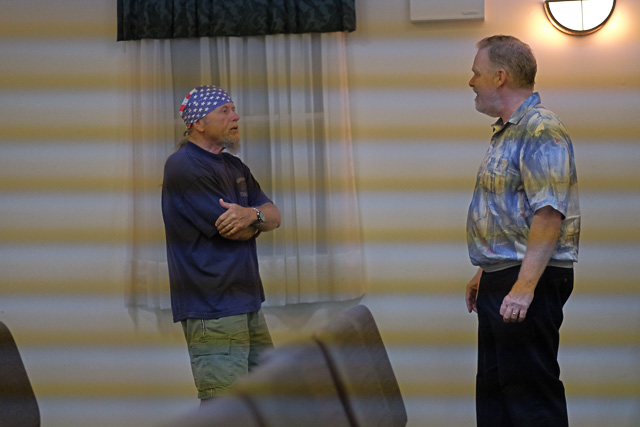
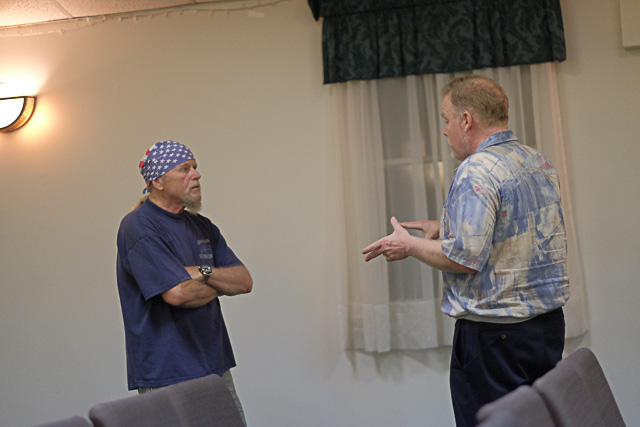
What you're seeing in the first photo is that parts of the photo were read during the peak of the fluorescent light output, and others during the low point when incandescent light (very amber) dominated.
X-T1 Conclusion
I shot this camera for ONE DAY before posting the first version of this review – so why the heck did I think I could say anything about this camera? Primarily the "DNA" this camera shares with the previous cameras. The sensor and look of the images, general layout and handling – all are based so much on the previous cameras that this was a camera I just picked up and shot and quickly adjusted to. I already feel like I "know" this camera. I was comfortable shooting and not distracted by the camera my first time out with it. My customized "Q" menu makes me very happy for those times I need to adjust something there isn't a dial or button for. Winner.
Here's a review of the Firmware 4.0 results, though they are far from complete as I've not used this camera enough on that firmware, nor do I necessarily make use of all the features. This list encapsulates both the pros and cons I mentioned in my overall lists above.
- In firmware 4.00 the dreaded "false lock" of the early cameras seems to be back. Although they have enhanced the sensitivity of the AF, there seems to be a discrimination problem. By that I mean that low light, low contrast subjects will sometimes give you a greeen "AF locked" box when they are so far out of focus it's actually funny. This can be diminished by shooting in zone mode with a 3x3 box, and also by keeping your stabilizer in mode 1 where it is running during AF. But it's still there at a higher rate than I'm accustomed to.
- In firmware 4.00 the macro mode isn't needed. The camera is better able to determine the need for it and decide to try focusing close. I prefer this but I could live with the other.
- Firmware 4.0 offers some new focusing modes that both solve some problems with rapidly getting focus on subjects (the zone modes) and facilitates motion tracking in a way that actually works now. I actually like the zone mode for low light autofocus as I seem to get faster more accurate "hits" with it than with a single point which helps address the false locking issue.

All My Children
The Fujinon XF 18-135mm f/3.5-5.6 R LM OIS WR Lens Review
What a mouthful these modern lens designations are. Not just Fujifilm either – many camera makers build a detailed specification in the lens designation these days. Here's what all those abbreviations mean:
- XF - Premium grade lenses with more metal in the construction and generally of higher optical quality.
- XC - More consumer grade lenses in both optical and mechanical quality. This lens though is XF.
- R - Has an aperture ring. Non "R" lenses would be more like Nikon's "G" lenses.
- LM - Linear motor used for autofocus. This is a different design than Nikon and Canon's general designs. Non "LM" lenses use regular spinning motors to position the lens elements when focusing.
- OIS - Optical image stabilization is built into the lens.
- WR - Weather resistant build that allows shooting in inclement weather – however it's NOT waterproof. Don't try to shoot underwater!
Now this lens has gotten something as a bad reputation to some extent. The suggestion I've seen is that it does not live up to the standards of the other XF lenses (although really the 18mm f/2 isn't stellar either). But zooms with greater than about a 4:1 zoom range are often quite a compromise. Lens designers can choose what they optimize versus what they let slide but it seems nearly impossible even with modern technology to make a really "perfect" long zoom range lens.
So what does Fuji appear to have done? Looking at the detailed scientific measurement reviews of this lens, it's apparent absolute sharpness was not a priority. Sharpness though is sometimes, as Henri Cartier Bresson once famously said, "a bourgeoisie concept" – that is, it's important more in an elitist sense than what it contributes to the overall impact of an image AS AN IMAGE, as opposed to a technical analysis.
Yes, there are times when sharpness can be important – but how sharp is "sharp"? The answer is: when it is "sharp enough". For most purposes this lens is easily sharp enough. Some of these images are actually slight crops and they still are "sharp enough".

Brilliant Little World
With all that in mind, here's my take on the lenses pros and cons.
What this Lens has Going for It
- Flare resistance is very good
- General rendering of color and contrast is very good
- Bokeh is mostly just fine and sometimes downright excellent, with certain caveats (see downsides section)
- Autofocus is not blindingly fast, but quite good, even at telephoto. This lens far outshines the 55-200mm Fujinon which just drove me nuts at telephoto with agonizingly slow hunting behavior.
- Sharpness is pretty good. If you stop down it could even be described as excellent. Urbex shots I did on a tripod in dim abandoned buildings where I stopped down to as much as f/18 were really very good in JPG thanks to Fuji's excellent deconvolution algorithm that removes diffraction based softening.
- Handling and build quality overall are excellent.
- The stabilizer is a wonder – it's the best one from Fujifilm yet in my opinion based on my handheld tests.
- The aperture ring has enough resistance to it to fight accidental changes.
- The aperture ring moves in 1/3 stop clicks.
- It focuses close enough to be used for some macro style work and it's close focus performance is good.
- There is absolutely no zoom creep. The lens stays where you put it.
- The lens is quiet in operation which is particularly needed during video work should you choose to use video. Fuji's aren't good at video overall.
Again I'll remind you that if you click through these shots to my Flickr site, you can see the EXIF data on camera settings.

It's a Magical Place
Where the Downsides are for this Lens
- The aperture ring isn't marked – but on a variable aperture zoom this is the norm. Still, it's a bit confusing at times when I instinctively try to look at the aperture ring before shooting.
- Sharpness isn't up to "pro zoom" standards – but then neither is the price of this lens these days. It was a bit pricey new when it first came out. Still, I tried it for some of my bread-and-butter "art" shots stopped down on a tripod and it worked well in terms of sharpness.
- The zoom ring is well damped but can be a bit "sticky" in places, especially at the ends of the zoom range. Not a problem for stills, but might affect zooming a video.
- Distortion at the wide end is noticeable even when corrected in camera. For me no deal breaker, I can fix it. The images above and below this section were geometrically corrected to get the lines towards the edge straight and not so curved.
- At certain focal lengths and apertures the bokeh gets dicey with very high contrast specular highlights in the background. I saw some shots where an annular "tree rings" or "onion" look appeared in the brightest highlights, particularly if you tried to compress the highlights in post. This did not happen all the time and I didn't map out what circumstances bring it out. Again, not a big deal for me.
- Made in China. Now, lots of great things are made in China -- but I have concerns about consistency and quality control with Chinese manufacturing. Hopefully Fuji is on top of this.

The Green 1/8 Mile
Image Supplemental: Urbex shoot in Monaca, PA
While traveling on business I often look for new sites to shoot in and I found one that gave me some nice shots. I'll put them in order here with the first ones being the ones I shot hand held, relying on the stablizer and the lens being mostly wide open aperture for the focal length I was shooting. On another day I went back and shot on a tripod to be able to use lower ISO and smaller apertures. These were from an abandoned and burned tool steel factory.
Hand Held Shots

Firewall

Sealed In
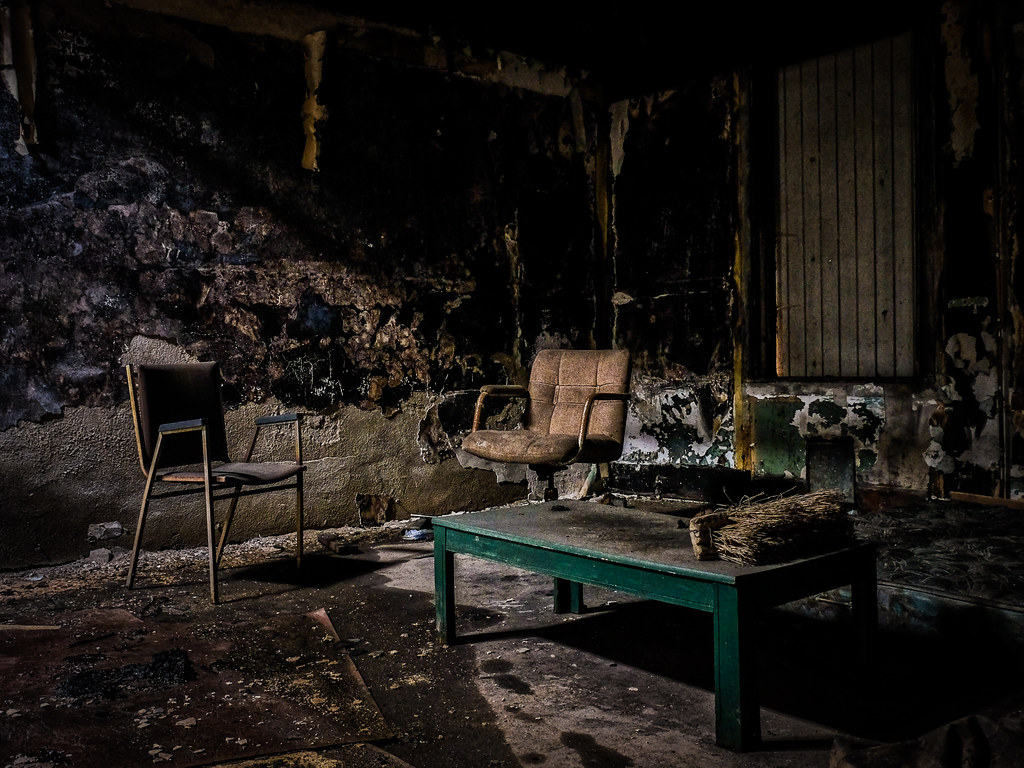
The Lounge
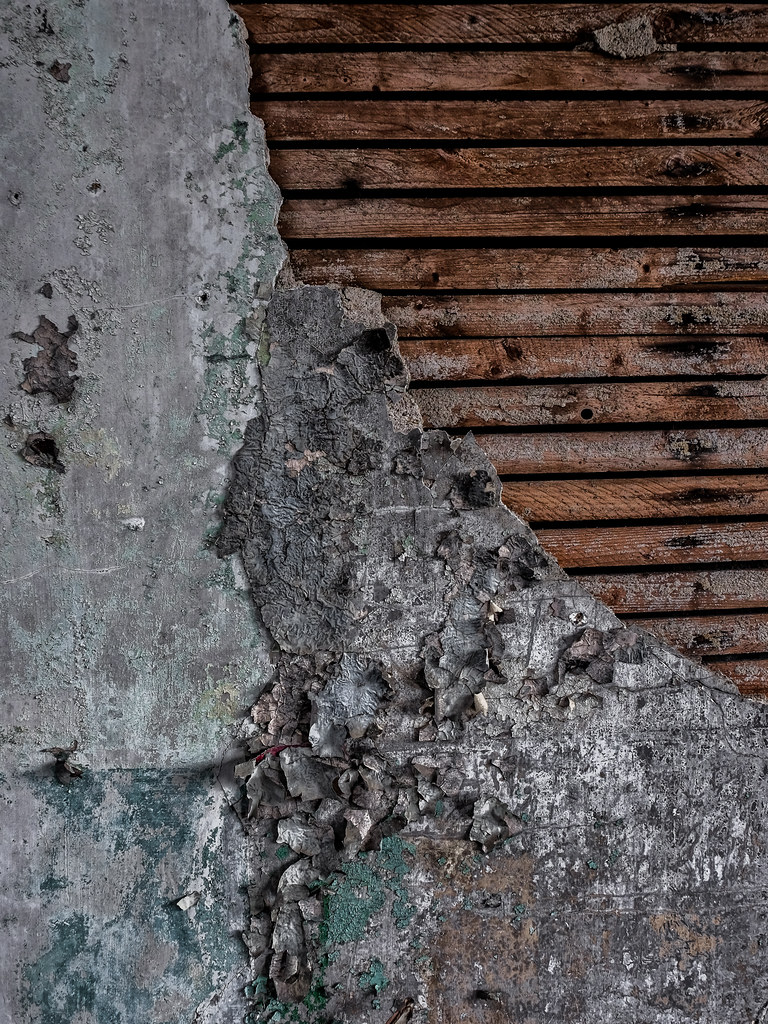
Geography
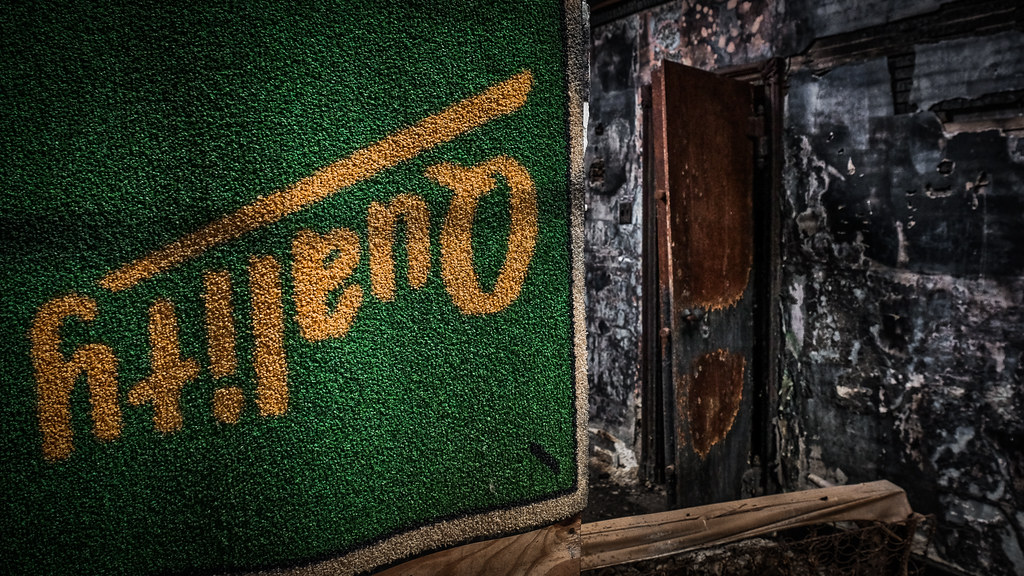
Quality
Tripod Shots

'Merica!
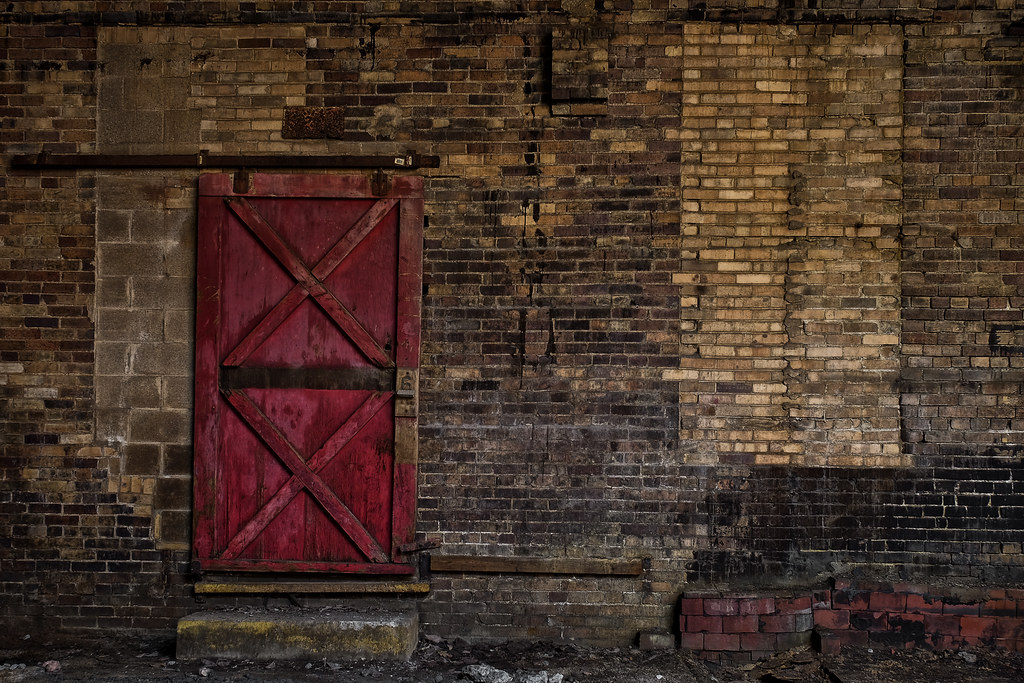
The Sixth Door

Lost Wages, 1956

If You Can't Stand the Heat...
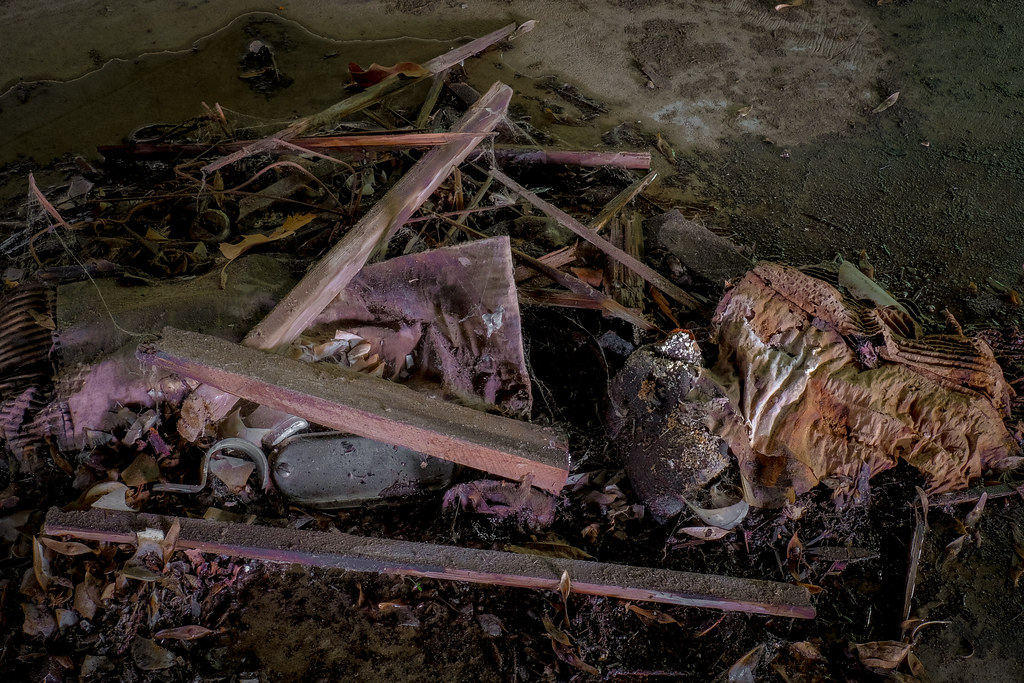
The Bermuda Triangle
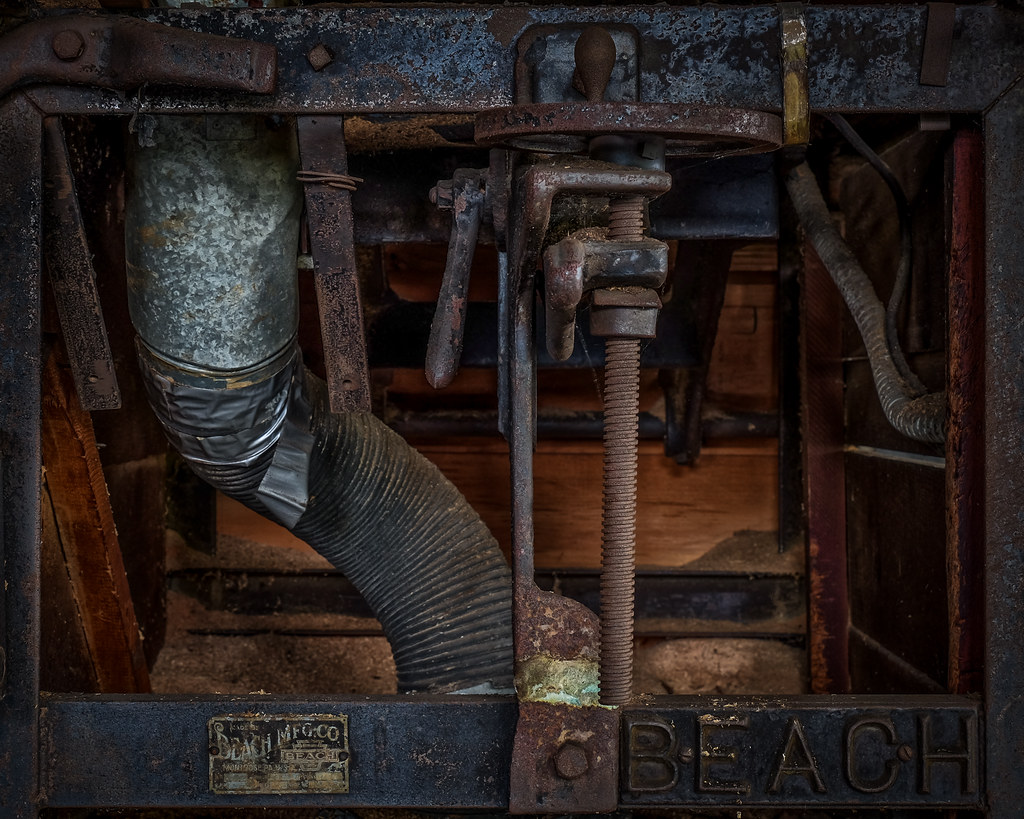
Life's a Beach

Just Down the Hall
Some Final Words
As I mentioned, mine is just one more voice in praise of this camera overall. Perfect? Hardly. But so very good it's hard not to be inspired by it.
For this old film photographer, the controls just work in a way that connects me directly to the camera. There is a lot to be said for the tactile, mechanical connection with the camera versus the digital menu-driven or "hold button and rotate wheel" paradigm we've all become accustomed to.
You can take great pictures with either style camera – but the shooting experience is different and for some of us that makes a difference. I'd also maintain that the direct controls allow for faster change-up of settings when needed. This camera works brilliantly by combining the best of the past with the best of the present.
As for the lens: I like it, I really do. Sometimes photographers malign the use of a "do all" zoom – but a lens like this could mean that you have a chance to get a picture you'd miss changing lenses, and you only have to carry one camera and lens. Ultimately, the image is point. If you can get your image with a certain lens, why wouldn't you use it?
As I've gotten older I care less and less about appearing like a "professional photographer" – carrying a boatload of huge equipment in the hopes it screams "I'm the Real Deal!". I know that desire in myself and I believe I'm not the only one. Now, I'm more concerned with what my images say about me as a photographer than what my equipment says about me. Anyone who judges a photographer based on anything but their work product is missing the point entirely.
But the opposite also applies: a photographer with a boatload of equipment can't be pegged for a poseur either. The works are what matters. And by the way, not everyone will like your work and that certainly applies to my work!!!
Wrapping Up
And the closing quote I find relevant. That "love" relationship between Fujifilm and its users makes things easier and easier as we go forward in ways that I've never experienced with other cameras.
“Faith makes all things possible. Love makes all things easy.” – Dwight L. Moody